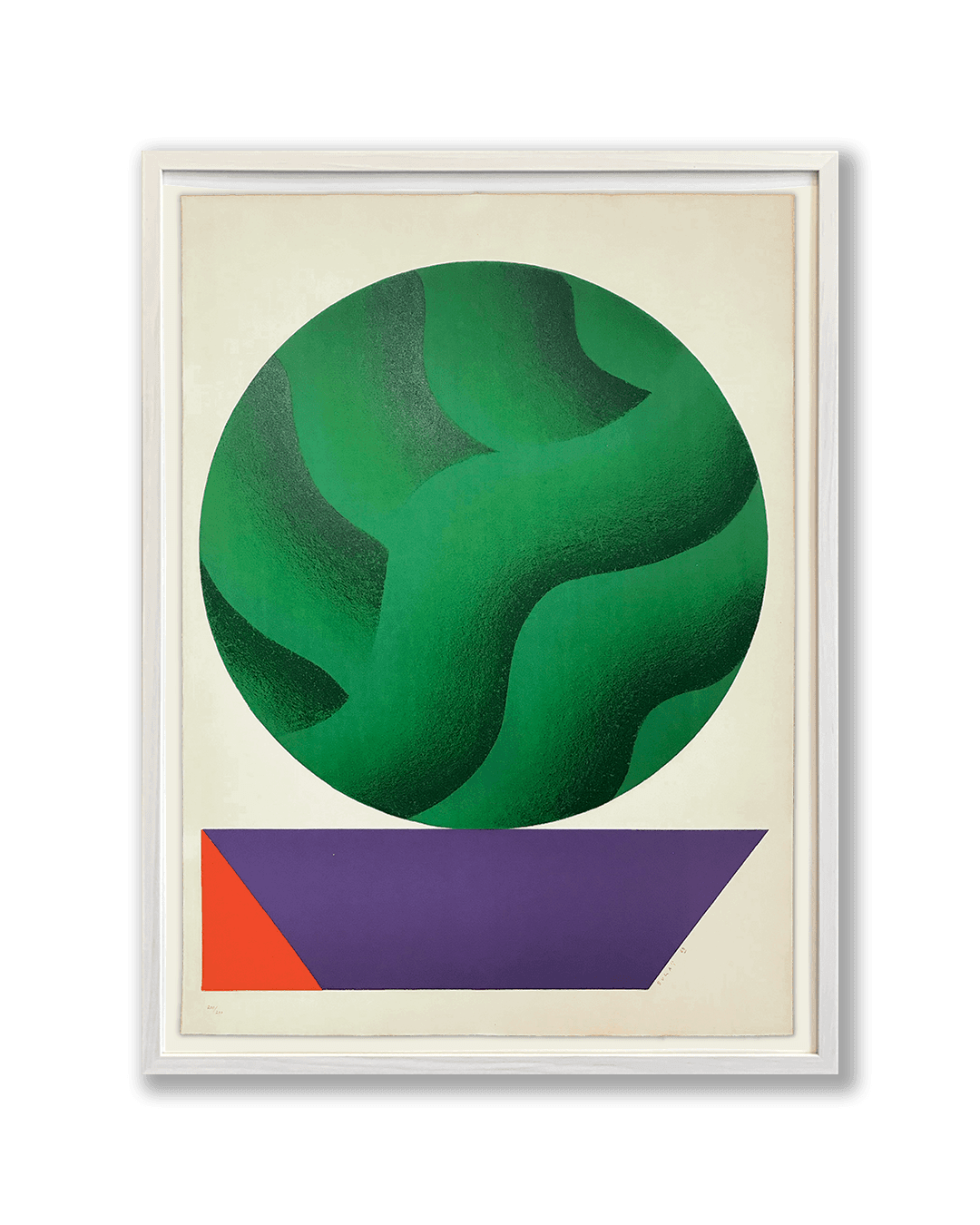
Kumi Sugaï was a painter, sculptor and print maker born in 1919 in Kobe, Japan. Sugaï first experimented with oil painting at age nine and became a student at the Osaka School of Fine Arts in 1933 when he was fourteen. He met with the Gutai Art Association founder, Jiro Yoshihara which had a huge impact on his further artistic development and experimentalism.
He was part of the first generation of 20th-century Japanese artists to become acquainted with Western painting techniques (under the instructions of Yoshihara), but he also explored both typography and Japanese calligraphy, important in his subsequent work. Sugaï left art school prematurely to work in commercial advertising for Hankyu electric rail company from 1937 to 1945.
























These formative years of practicing Western and traditional Japanese mediums gave a dual foundation to his future work. He dedicated himself to painting and moved to Paris in 1952, enrolling at the Académie de la grand chaumière, being one of the first generation of the post-war Japanese artists to join the international avant-garde art scene.
Sugai was immediately noticed in Paris for his delicate touch and use of abstract gestures resembling primitive forms. He had his first solo show at Galerie Craven in 1954. In 1955 he made his first work in edition (Diable Rouge, a lithograph) and decided that from now on print work (lithographs, etchings and later silkscreens) was going to be an important part of his oeuvre. One of the reasons was to make his work more accessible. Between 1955 and 1996 Sugaï produced a little under 400 works in edition.

Kumi Sugaï'Hiver', 1956
Considered part of the École de Paris (School of Paris) and the Nouveau Réalisme (New Realism) movements, in 1962 he began to move from calligraphic, mainly monochromatic, organic motifs to more hard-edge geometric forms painted with clear colors. This aesthetic was more often than not influenced by speeding the curves of the freeways surrounding Paris in his beloved Porsche. He was possessed with speed and in a lot of his work we find abstracted roads (The S shape) details of roadsigns, parkings and in general an abstract visual language inspired by what he would see through his window moving at great speed. City and rural Landscapes transformed into simple colored compositions.






























Sugaï found great joy in the act of repetition and some iconic shapes have been appearing in his work throughout his whole career, first loosely and soft in his early etchings, paintings and lithographs, later hard edged and straight in his silkscreens.
His artworks were shown in numerous exhibitions around the world and most of his paintings are in the collections of well-known museums (Such as MOMA and Centre Pompidou) and important collectors.
Sugai died in Kobe in 1996.
Kumi Sugaï
- A Selection of Prints from 1955-1996, 2022
Bisou Gallery, Amsterdam, Solo Show - Galerie Artcurial, 1990
Paris, Solo Show - Seibu Museum of Art, 1983
Tokyo, Retrospective Show 1952-1983 - National Art Museum, 1969
Kyoto, Solo Show - National Gallery, 1967
Oslo, Solo Show - Bienal de São Paulo, 1965
São Paulo, Group Show - Documenta III, 1964
Kassel, Group Show - Documenta II, 1959
Kassel, Group Show - Kootz Gallery, 1959
New York, Solo Show - Galerie Craven, 1954
Paris, Solo Show






